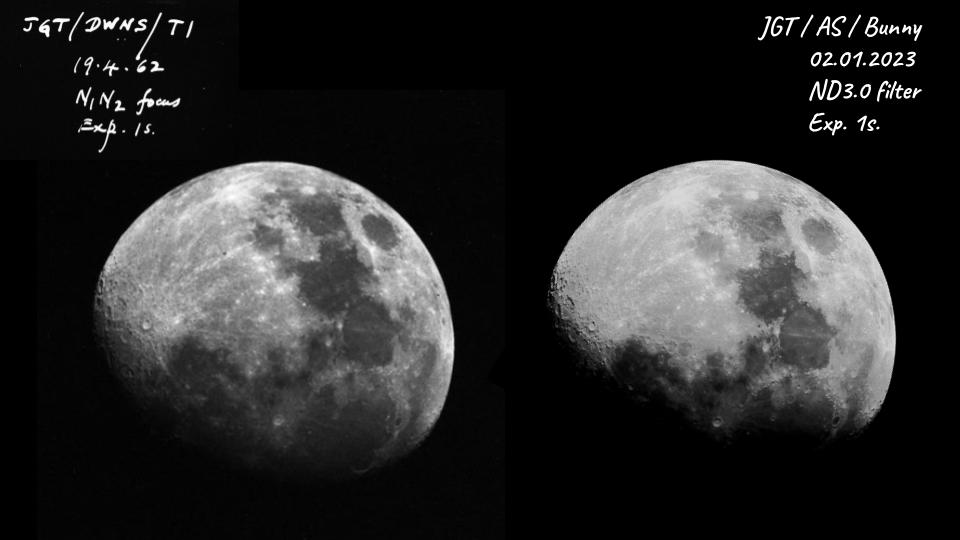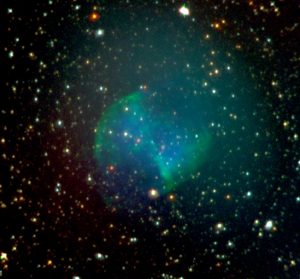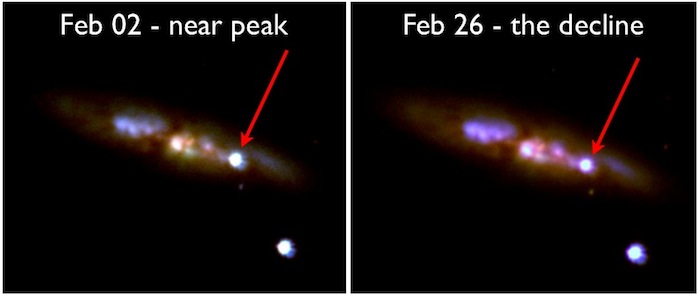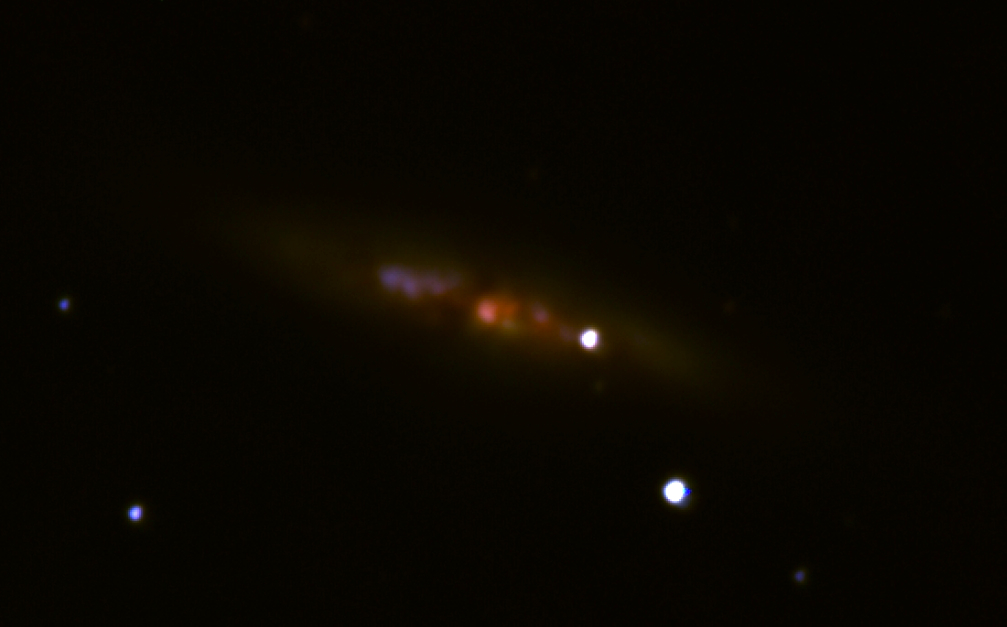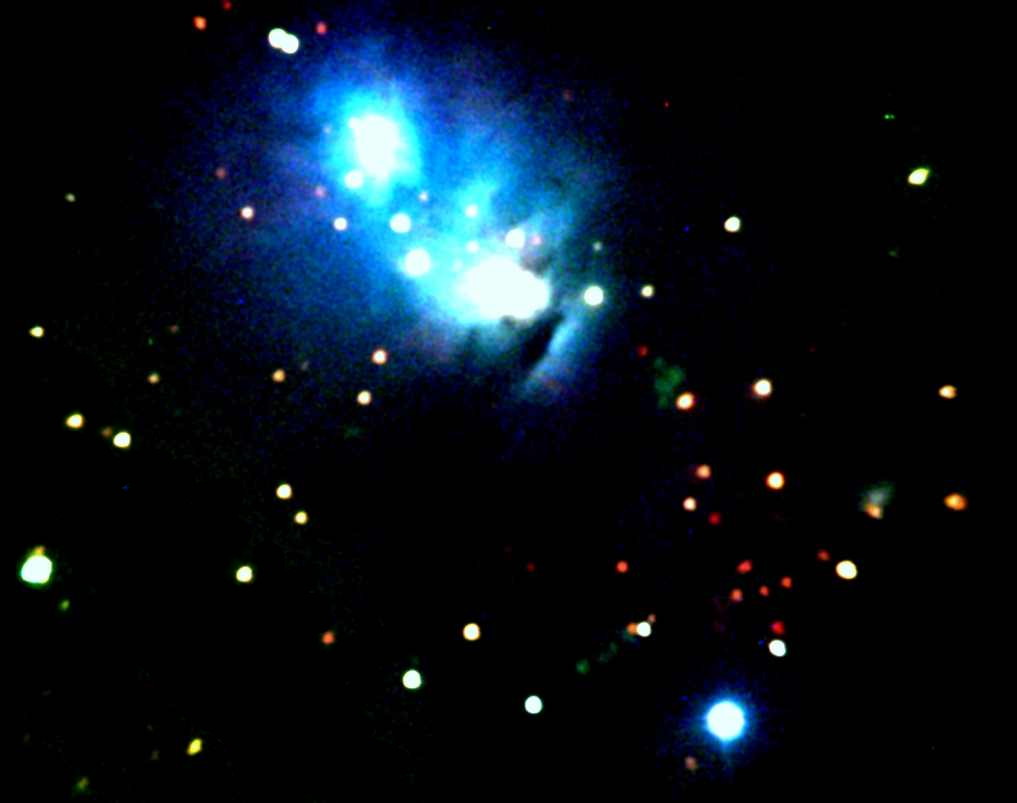Images
The Moon was one of the first targets for the newly built James Gregory Telescope, in mid April 1962, observed by Prof Stibbs. Recently we acquired a new image with the Starlight Xpress Trius CCD, which is just big enough for the angular size of the Moon. Since the CCDs are so much more sensitive than photographic plate, it took a bit of luck, and a filter that blocks 99.9% of the light, but the end result is respectable – although not quite as beautiful as the old one.
Dumbbell Nebula M27 – test observations taken during the open hours on November 1st 2017. Color image made from V- R, and I-band images, with a QSI camera, exposure times 100 seconds per filter. Observer: Aleks Scholz
Supernova SN2014J near peak and four weeks later, observed with the JGT. Colour images made from V-, R- and I-band images, using the Andor camera, exposure times around 30 seconds per filter. Observers: Inna Bozhinova, Diana Juncher, Aleks Scholz
The supernova SN2014J in the galaxy M82, observed with the JGT on January 23rd (about 24 hours after discovery). Colour image made from V-, R- and I-band images, with the Andor camera, exposure times 120, 120, and 60 seconds. The supernova is the only bright star in the galaxy. Observer: Aleks Scholz
The young star cluster NGC1333 in the Perseus star formation complex, observed with the JGT in November 2013. Colour images made from V-, R-, and I-band images, from the Andor camera. The image shows hot gas in blue, embedded young stars in red, and outflows from young stars in green. Observers: Jack O’Malley-James, Joe Llama, Aleks Scholz

